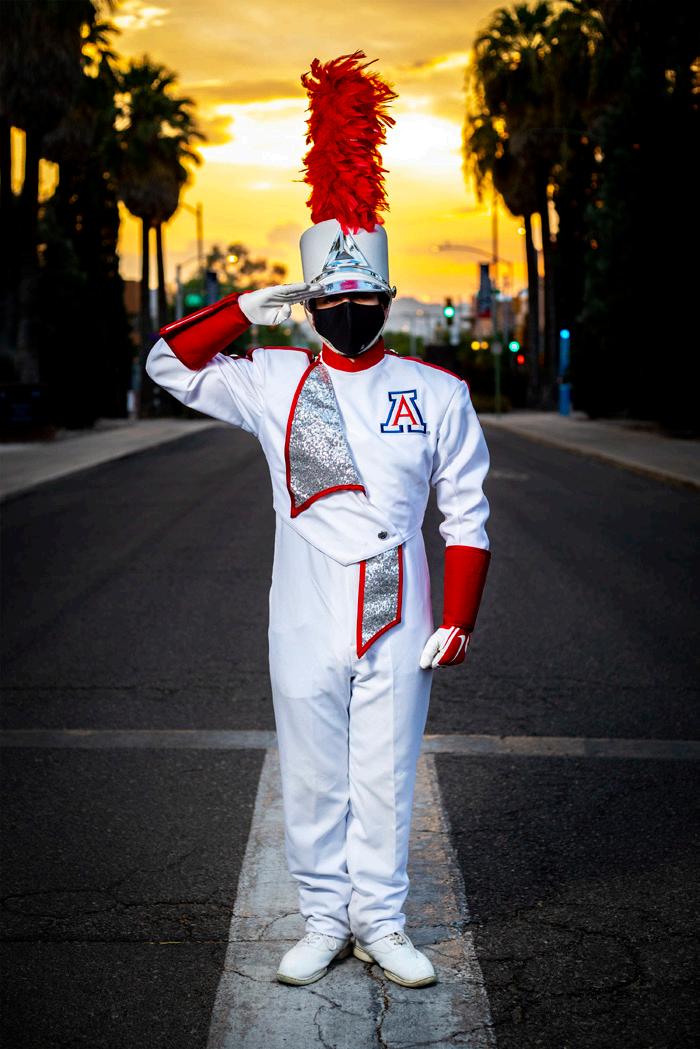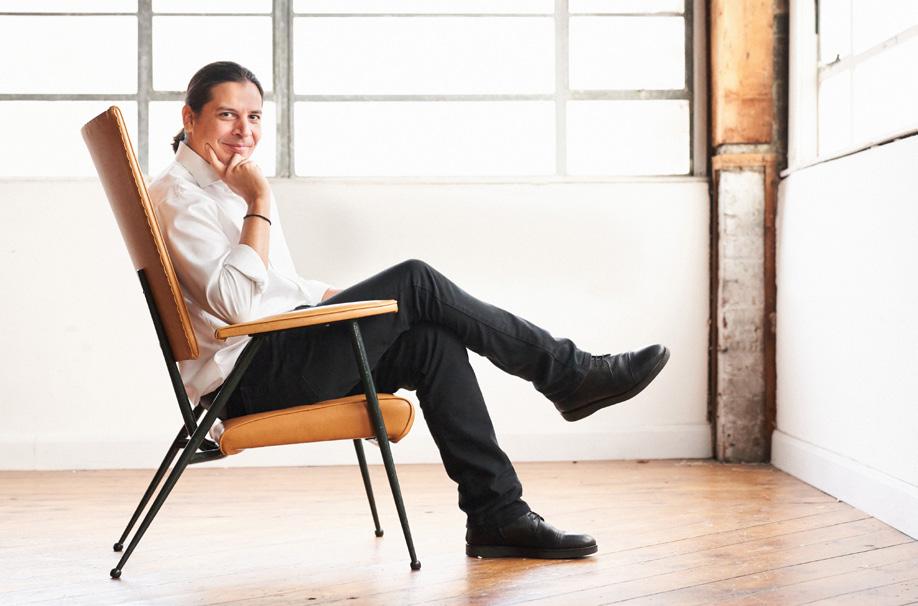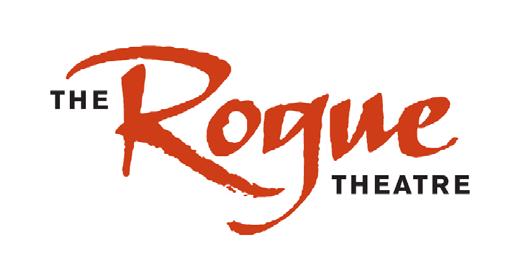
8 minute read
ARIZONA ARTS
ARIZONA ARTS envisioning the new world
By Beverly Medlyn
Advertisement
Ata time when people need the arts more than ever, the University of Arizona is finding new ways to engage the community, train students despite the uncertain future and sustain the local arts ecosystem, all impacted by the coronavirus pandemic.
“What does the new world look like?” asked Andrew “Andy” Schulz, the university’s vice president for the arts and dean of the College of Fine Arts. “We are looking for the best ways to engage with our audiences at this time, and we hope people are willing to be adventurous and come along with us.”
Arts and athletics are the two front doors to the university, says Schulz, who assumed the newly created vice president position two years ago, coming from Pennsylvania State University.
His first order of business was to devise a unified gateway called Arizona Arts, integrating the College of Fine Arts with the university’s public-facing entities. Those entities include Center for Creative Photography, UA Museum of Art, Arizona Arts Live (formerly UA Presents) and Arizona Arts in Schools, which serves K-12 students in challenging socio-economic circumstances. 14
Launched in July 2019, Arizona Arts had eight months to get established before COVID-19 shut the doors of performing arts venues, museums and many classrooms.
Millions of dollars in revenue have been lost. But the tough circumstances also represented an opportunity for Arizona Arts to take wing, Schulz says. “The holistic structure puts us in constant communication and collaboration with one another to send a unified message,” he says.
ARIZONA ARTS LIVE
Chad Herzog was brought on board last year to reimagine UA Presents, which had been in place 25 years as the presenting organization for live performance. Typically, events have been staged at the university’s Centennial Hall, a 2,500-seat theater that is temporarily closed.
Arizona Arts Live, unveiled this fall, takes the arts outside building walls, adding an element of surprise.
“We will make Southern Arizona our stage rather than just Centennial Hall,” Herzog said. “Performances will happen all over Arizona. When we talk about Arizona Arts Live we

are talking about ‘Experience Unexpected.’ Delivering unexpected moments is our core.”
Among this fall’s innovative live offerings:
• A new concert series, “Inside/Out” taking live performances into the lush Sonoran Desert, with the audience listening on headphones allowing them to enjoy the music from afar.
• Images of faces projected onto trees and gardens at the university campus.
• Two co-commissioned pieces of interactive theatre developed for our current times connecting us to our past, our own present, and our collective future.
• Six concerts in Arizona Stadium featuring some of the best music the Sonoran Desert has to offer.
• “A Christmas Carol” performed by a Chicago-based theater company posted online.
Herzog came from New Haven, Connecticut, where he directed the International Festival of Arts and Ideas. The move was a homecoming for Herzog, born and raised in Phoenix.
Programming will be designed to appeal to year-round residents and students, he says. Offerings are listed on the new website arizonaartslive.com.
In response to the pandemic, The Tucson Studio (thetucsonstudio.com) was launched as an online resource for Southern Arizona musicians to enhance their online presence. The site provides technical assistance with audio and video production for live productions and a platform to showcase performances. In spring 2020, the first of the concert series was filmed on location at Tucson Botanical Gardens and posted on the online platform. Since then, over 30 performances have been filmed all over Tucson.
More than 200,000 people worldwide have watched Tucson Studio’s streaming concerts, Herzog says. “We try to encourage people to tip the artists through an online tip jar online,” he says. “A number of the artists have said they have made more money playing virtually than they used to playing in person.”
Another creative response to a current event occurred after a Trump administration ruling — subsequently rolled back — to require international students to take a course in person to maintain their visas. That gave rise to Sounds from the Sonoran Desert, a one-credit class for students and Arizona Arts Live fans, who gather at the football stadium to listen to a variety of music endemic to the Southwest in an outdoor setting with ample space for socially distanced seating.
CENTER FOR CREATIVE PHOTOGRAPHY
The Center for Creative Photography, founded in 1975 at the University of Arizona, is recognized as one of the world's finest academic art museums and study centers for the history of photography.
Its collection includes more than eight million archival objects, including negatives, writings, prints and audiovisual materials. The center also has acquired more than 110,000 works by 2,200 photographers.
“We are a research institution and a museum, serving a wide range of constituencies worldwide,” says Anne Breckenridge Barrett, center director and associate vice president for the arts. “Exhibitions and programming are planned months and years in advance. With the pandemic came an incredibly rapid overhaul of all the plans we had in place to respond to the moment.”
Funding structures shifted, with some disappearing overnight and new avenues opening, she says.
Like other university museums, the center closed in March. Staff works remotely except for a dedicated team that maintains the facility, ensuring the preservation of the archives and collection.
Digital programming has been developed and enhanced. Experts lecture on topics including how to preserve family photos and digital photographs. It is now possible to take an online tour of the physical exhibitions, including projecting images onto a wall in your own home (ccp.arizona.edu).
Looking forward, Breckenridge Barrett anticipates a burst of creative work telling the stories of our times.
UNIVERSITY OF ARIZONA MUSEUM OF ART
Though the University of Arizona Museum of Art has been closed since March, art aficionados can still stroll through the galleries, examine works of art from various angles and read about the artists’ works — all on the museum’s website (artmuseum.arizona.edu). Modern art, American art and the work from the Samuel H. Kress Collection are among the current online exhibitions.
Those longing for human interaction can pop into the Virtual Art Trivia Happy Hour, available through Zoom. Pour a glass of your favorite beverage and tune in to take a multiple-choice online quiz (answered anonymously), and chat with your Zoom-mates.
Carla Fabris, a Tucson harpist, attends the happy hours along with her mother, an art history teacher who lives in New York.
“It’s really fun!” Fabris says. “It’s nice to see familiar faces on Zoom. And it’s a fun way to test your art history knowledge.”
The museum’s website also offers art lectures and practical classes, such as how to care for artwork in your home.
“Picturing 2020: A Community Reflects” features works by more than 150 Southern Arizona artists expressing concepts and images spawned by the pandemic, racial violence and political protest. The exhibit runs through March 2021.
SCHOOL OF DANCE
The School of Dance is planning outdoor drivein performances for Tucson audiences on the university mall. Patrons may sit in their cars to watch the shows, which will be under an hour long.
“While technology has accelerated exploration into new types of digital collaboration and presentation, there is no substitute for the powerful, shared experience of coming together to see live dance,” says Whitney Herr-Buchholz, director of operations and advancement for the School of Dance.
Online offerings will include work by faculty and dance majors filmed in the school’s theater and other locations specifically for digital presentation platforms, she says. Other online offerings will feature footage of works from the school’s archives.
This fall, dance students are attending classes both in-person at the campus and online. Because dance by its nature involves close physical contact, dance and athletic department administrators have collaborated on safety protocols, says Schulz.
The Fred Fox School of Music also faced safety challenges because playing musical instruments and singing pose a heightened risk of aerosolizing the virus, Schulz says. Special face masks were made with slits for musicians playing wind instruments, and covers were fashioned for brass instruments.
SCHOOL OF THEATRE, FILM AND TELEVISION
The School of Theatre, Film and Television suspended live performances due to the pandemic and expanded online offerings.
Arizona Repertory Theatre, the public showcase for the school’s professional training, is exploring several performance alternatives for spring. In the meantime, the school will soon launch ART in Conversation, a series of online talks with industry luminaries.

A signature program of the school, “I Dream in Widescreen” is the annual premiere of senior thesis films. The event usually attracts a capacity audience to the Fox Tucson Theatre.
This year it was reimagined and expanded from a one-night event to a two-day film festival, featuring conversations with a dozen film and television industry notables, all alumni. The event took place live on the school’s YouTube channel, making the films accessible worldwide and attracting thousands of views, says Kerryn Negus, the school’s director of advancement and external relations.
At the start of the fall semester, most of the school’s classes are online. In-person classes meet in larger spaces like the Tornabene Theatre, where students and faculty follow mandatory safety protocols.
FUTURE PARTNERSHIPS AND SUPPORT
Changes brought by the pandemic cut both ways, revealing both the possibilities and the limitations of technology, Schulz says.
Though Arizona Arts has been hurt by this year’s lost revenue, the division has the benefit of being part of a large university system, he says.
“Where things are much harder are our local nonprofit arts organizations,” Schulz says. “We really worry about those organizations because they are essential partners for us. Most have very little safety net.”
Schulz envisions a future of deeper partnerships that strengthen both the university and local arts organizations. He also would like to see a sustainable funding mechanism created to support arts across the region.
“This is an extraordinary location to do the work we’re doing. There is so much here that is so rich and vibrant. But it feels very fragile now,” Schulz says. “What can people do? Support their local arts ecosystem.”
For more information, visit arts.arizona.edu.










